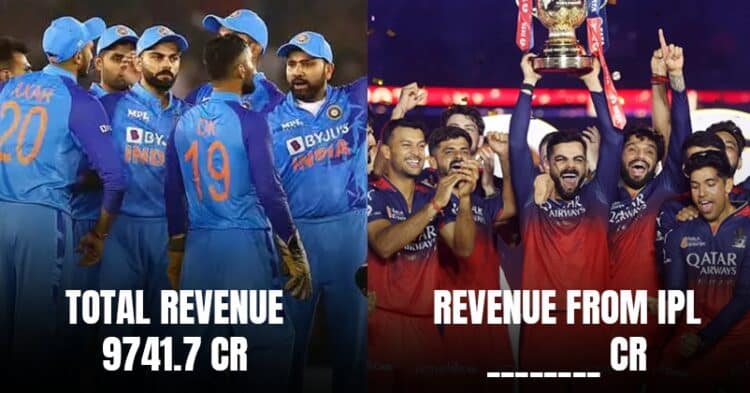The Indian Premier League has firmly established itself as the financial backbone of the Board of Control for Cricket in India (BCCI), accounting for more than half of the cricket body’s total earnings in the financial year 2023–24. A recent report reveals that the IPL alone contributed a staggering 59 percent of the BCCI’s total revenue, reinforcing its status as not just a cricketing spectacle but a commercial giant.

Introduced in 2007, the IPL operates as an annual franchise-based T20 tournament featuring ten teams and a blend of top domestic and international players. The league has rapidly evolved into the world’s most valuable T20 competition, attracting massive media deals and global viewership.
As per data reported by a leading publication, the BCCI generated Rs 9,741.7 crore in total revenue for FY23–24, with Rs 5,761 crore of that coming directly from the IPL.
Business strategist and independent director Lloyd Mathias, commenting on the league’s financial significance, described the IPL as a “golden goose” for the BCCI. He highlighted how the league has grown to become an indispensable part of the Indian cricket’s financial machinery. He pointed out that media rights are seeing consistent appreciation and the IPL also creates a platform for domestic players, particularly those from the Ranji Trophy level, to showcase their talent on a global stage. According to him, this trend of profitability is set to continue as the league expands its reach and appeal.

While the IPL remains the star attraction, the board also earned Rs 361 crore from non-IPL media rights, including those tied to international broadcasting deals. Yet, this portion of income is minimal in comparison to the league’s dominant share.
Sandeep Goyal, Chief of Rediffusion (an ad agency), noted that the BCCI is yet to fully tap into its revenue potential. He believes there is significant room to monetise traditional domestic cricket formats such as the Ranji Trophy, Duleep Trophy and CK Nayudu Trophy. These tournaments, though historically rich and competitively significant, remain under-commercialised and underexposed compared to the IPL.
Sandeep Goyal further pointed out that the BCCI holds close to Rs 30,000 crore in reserves and the interest from this corpus alone generates nearly Rs 1,000 crore annually. He emphasised that this financial structure is not only sustainable but poised for an annual growth of 10 to 12 percent, owing to increasing sponsorship deals, media contracts and earnings from match days.

The report also touched upon the global cricketing landscape, revealing the International Cricket Council’s (ICC) growing reliance on the BCCI. With the ICC reportedly falling short in generating expected revenues, it is increasingly dependent on the Indian board’s financial contributions to sustain global cricket operations.
As the BCCI continues to rake in record-breaking earnings largely fuelled by the IPL, industry experts are now urging the board to diversify its revenue streams by nurturing and commercialising its vast domestic cricket ecosystem, an untapped reservoir of both talent and financial potential.




